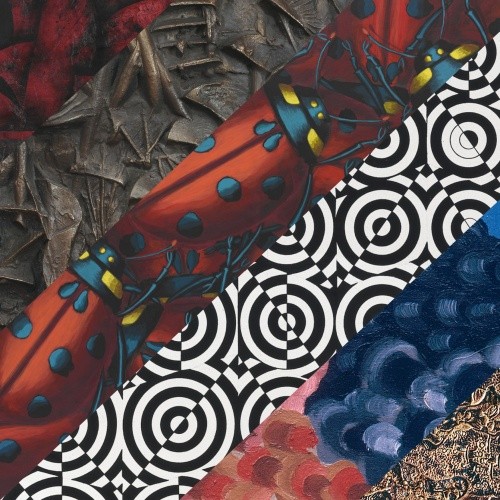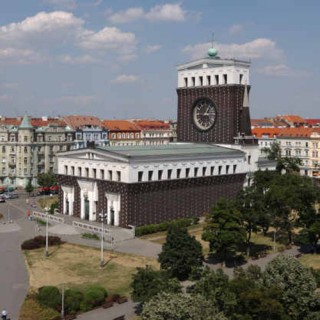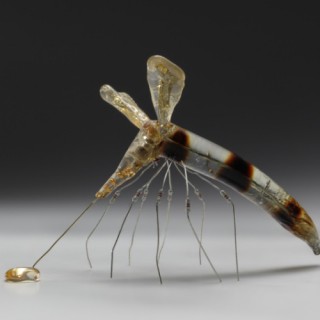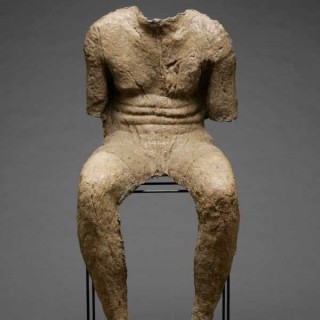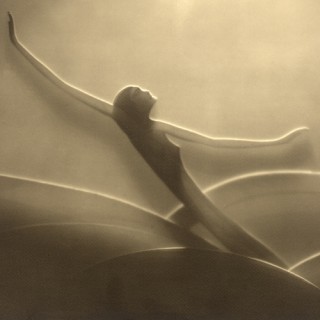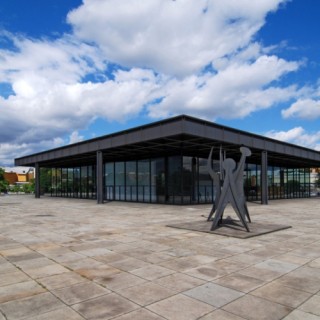Do Not Sit Down This Time | Seating Furniture from the Museum Collections
June 9 to October 9, 2011
Museum of Modern Art | Picture Gallery
The collection of applied art of the Olomouc Museum of Art, founded in 1997, currently comprises nearly 200 items and illustrates in a representative manner the evolution of the design of seating furniture from the mid-19th century up to the beginning of the 21st century. Although it focuses primarily on seating furniture designed by renowned designers there are also significant industrial products. It includes a comprehensive collection of bentwood furniture made by the Moravian companies Thonet and J. & J. Kohn, Art Nouveau furniture by Josef Hoffmann, Adolf Loos, Otto Wagner and Dušan Jurkovič, as well as examples of modern 20th century design (e.g. Mies van den Rohe, Jindřich Halabala, etc.), seating furniture from the 1960s (Bohemia, Italy) and examples of artist’s furniture (Yves Klein, Milan Knížák and the Atika Group). This representative exhibition ranks among the most attractive projects of the year.
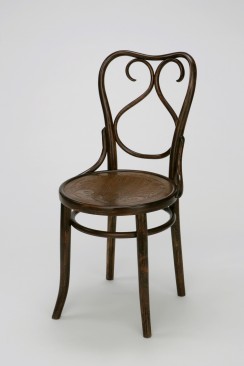
around 1900 / Gebrüder Thonet
Serial pattern chair with catalog number 548 from the later production firm Gebrüder Thonet.
Photo: Lumír Čuřík
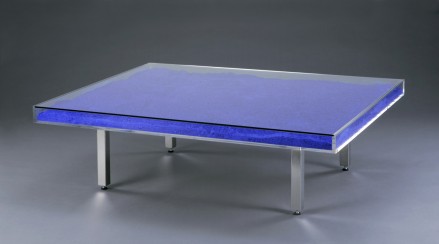
Blue table (Table Bleue), 1961-1963
Object Table Bleue, table painter and performer Frenchman Yves Klein, produced on the basis of the authors model of 1961 in other editions (later under the supervision of Kleins widow Rotraut Klein-Moquay). It consists of a simple four-legged base made of stainless steel, on which sits the ark with perspex nasypaným blue pigment patented as IKB (International Klein Blue), which is in the authors work function symbol of freedom and depth of spiritual knowledge. The upper surface of the table consists of a glass plate. On the bottom surface of the box is specified in accordance with the patent labeling Nr. 03AIE15 attesting to the authenticity of the work.
Photo: Lumír Čuřík
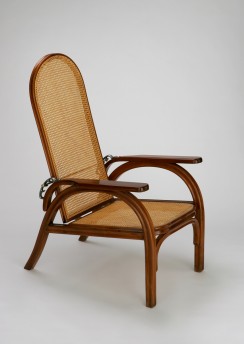
Recliner (Morris Fauteuil), 1904 / Gebrüder Thonet
The author of the positioning chair, catalogs known as chair morrisovské (no. 6393) was in 1904 by architect Otto Prutscher, which proposed to fi RMU many models Gebrüder Thonet chairs and furniture. Type favorite chair positioning adapted and produced in England since 1866 W. Morris in the context of workshops Arts and Cra¬s Prutscher inspired to create his own version of bent wood. Lightweight construction vaulted arches connecting the front and rear legs are stable chair base, coupled with the seat and backrest. Positioning the backrest allows metal bar lying in one of four steel cleats on extended rests.
Photo: Lumír Čuřík
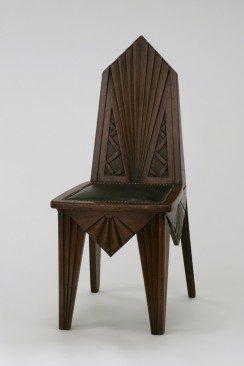
Chairs, 1925
Chairs Style Paris exhibition, the Polish pavilion of the World Exhibition of Decorative Arts in Paris in 1925 suggested prof. Mieczysław Kotarbinski, was part of an assembly consisting of a table, two chairs and two sofas. In Paris was set rewarded with medals and ranks among the important and appreciated expressions of modern trends in Polish art. A group of artists influenced pavilion Warsztaty Krakowskie (1913 -1926), a grouping of artists and craftsmen, whose aim was to raise the level of production of objects of applied art. For Warsztaty Krakowskie was characterized by joining folk influences with modern trends in art. Solid wood, jagged forms carvings folded into triangles (crystalline) motifs create bizarre morphology chairs reminiscent of Cubist forms and inspiration Gothic art of furniture, appearance corresponds also the art deco style of the 20s of the 20th century.
Photo: Lumír Čuřík
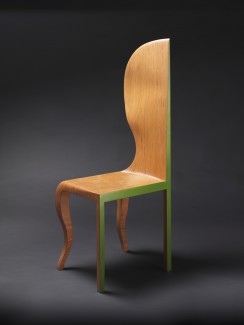
Chairs SoftHard, 1974
SoftHard chairs designed in the 70s Milan Knížák is in its postmodern oriented creation unique. Surface structure asymmetrical chairs technology creates bonded veneers, subsequently processed into organic lines. On the right side of the chair legs, seat and back chair is "terminated" sharply bevelled cut perpendicular. The cutting surface is provided with a green color. Formal and semantic content tensions arising combination of hard and soft shapes (as opposed to soft lines and their brutal ends), is integrated in the title of this chair.
Photo: Lumír Čuřík
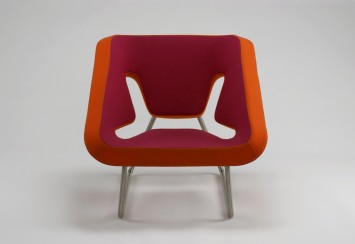
Armchair Koxy
Armchair Koxy was part of a series Koxy furniture (chairs, sofas, couches), which the author Jan Čtvrtník presented in 2004 at the Academy of Arts, Architecture and Design in Prague as a thesis. In the same year as they won the National Award for Student Design Competition and winning the journey through time, the path to the future opened fi rm mminterier. Processing sketches on computer modeling program Rhino enabled the completion of all the details, including the procedures for upholstery, processing holes concave surfaces of seats in compliance with ergonomic principles, color, etc. The implementation took place in the workshop mminterier Luhačovice, led by Miroslav Manas.
Photo: Lumír Čuřík
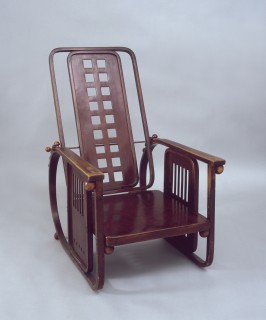
Recliner Sitzmaschine, 1905
The epitome of the Vienna Secession in geometric furniture design became recliner Sitzmaschine (machine session), which was designed in 1905 by Josef Hoffmann originally for Westend Sanatorium Purkersdorf near Vienna and received since 1906 in the production of bentwood furniture firm of J. & J. Kohn as catalog number 669. He later produced several series of other companies in the manufacture of bentwood furniture. Strict geometric architecture design chair decor highlights rectangular cross sections in plywood in the sides and in the positioning of the backrest of the chair. Hoffmann portrayed artistically and method of positioning a sliding backrest with steel bars into shaped steel cleats. A distinctive characteristic details are decorative ovals (manufacturing firm Gebrüder Thonet was also used to shape the ball) providing a paved connection of the seat and legs of furniture. Part of the chairs are originally separate textile pillows (firm Joh. Backhausen & Söhne). While armchair followed the popular morrisovské chair, but its morphology is a new quality. It is a modern artistic artefact, an object placed on a new frontier, which shifted the understanding of the unique work of utility value as works with so-called equivalent. High art.
Photo: Ivo Přeček



